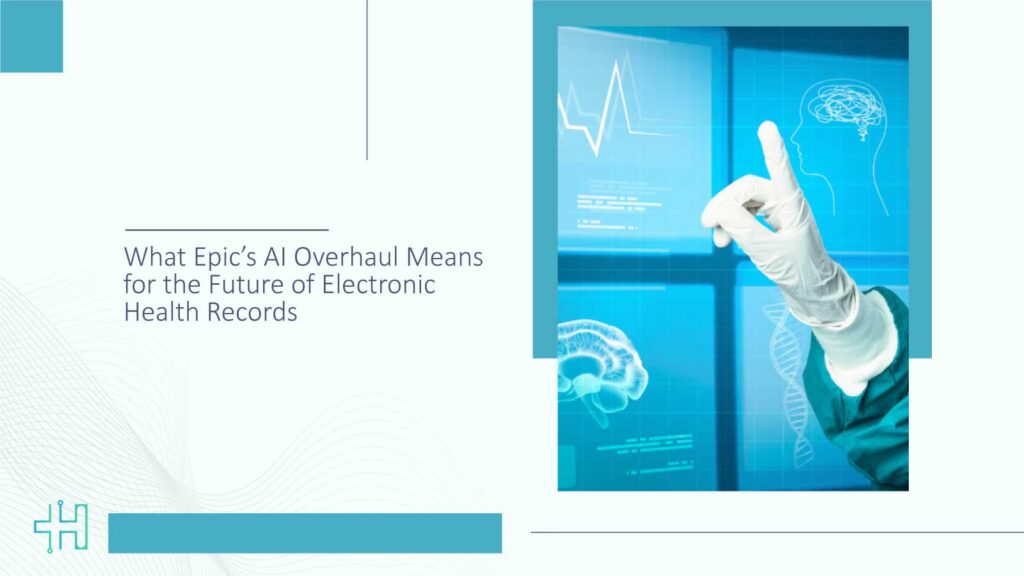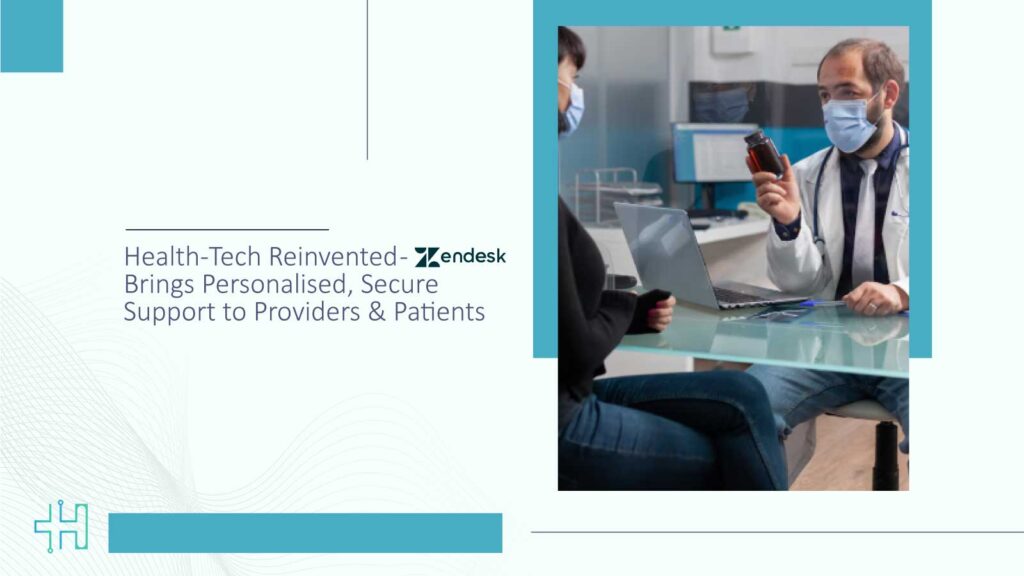To begin with, electronic health records (EHRs) were aimed at collecting information in one place and facilitating the provision of quality care; however, to a great extent, EHRs have ended up increasing paperwork. Healthcare workers are now burdened with a task that requires them to document for hours, which in turn limits the time they have for directly dealing with patients, and also is one of the main causes of stress, exhaustion, and burnout among the healthcare workforce. In the last couple of years, these problems have become more severe and severe and have therefore made the demand for change not only urgent but also compulsory.
Epic’s 2025 statements are a good example of the role artificial intelligence can play in turning the situation around. With the incorporation of generative AI and intelligent agents, the documentation process is simplified, clinical workflows are accelerated, and patient engagement is improved, according to Epic. This is a dramatic change where EHRs no longer hold the data but act as smart digital partners that not only interact with the doctors, but also perform tasks, which were previously unimaginable, in the case of record-keeping, administrative work, and patient care.
The move counts as a shift from the perspective of healthcare executives, who were initially pessimistic about the future of EHRs as they were considered unavoidable but burdensome systems. The decision-makers of the healthcare sector can now reorient their views to see EHRs as strategic enablers of better outcomes. It is the AI-powered transformation, such as the one orchestrated by Epic, that in the first place opens the door for the future healthcare scenario where AI is no longer only seen as a mere efficiency tool but rather as a long-term patient care innovation, patient satisfaction, and healthcare financial sustainability promoter.
Key Innovations from Epic’s Overhaul
During its 2025 Users Group Meeting, Epic revealed to the public its most expansive range of AI-powered features. The main focus was on Art, an AI generative scribe created with the help of Microsoft’s Dragon Ambient technology. This helper is going to be with doctors during patient visits and will instantly write down what is being said in an organized way in Epic’s mobile apps, Haiku, and Canto. The first use is planned for the beginning of 2026, so it will be a quick and efficient way for doctors to handle one of their tasks.
Moreover, Epic presented diverse AI agents who have specific knowledge of different healthcare areas. Emmie, the digital assistant at the patient’s service, is situated in MyChart and is engaged in a variety of tasks such as organizing, communicating, summarizing, and answering questions related to billing. Penny, on the other hand, is concerned with the money aspect of the medical institution, especially with healthcare coding and denial management. By inserting such a concerted interaction of AI resources – Art, Emmie, and Penny – Epic not only looks into the development of their AI ecosystem, which is extensive in terms of technology, but also designs it in such a way to ease the burdens of both clinicians and patients, along with the administrators.
Impact on Clinicians, Patients, and Operations
Directly affected by this are the clinicians whose situation might change radically in a positive way as a result of this AI revolution. Administrative work is one of the leading causes of burnout among medical personnel. According to the American Medical Association, 57% of physicians consider that the best use of AI would be in reducing the administrative burden of doctors. By obtaining the help of Epic’s Art assistant for the tasks of note-taking, voice transcription, and summarization, there is no doubt that physician workflows would be revolutionized to the extent that the primary doctor-patient interaction would be back at the core.
The changes that are going to happen with the overhauling of the system by Epic will also facilitate doctor-patient communication in a highly personalized manner, and the cause of accessibility will be one of the major perks. Supported by the assistant in MyChart, Emmie opens the way to imaging summarization, billing explanation, and conversational scheduling.
In this way, the convenience of use is enhanced and a stronger engagement is built, which in turn empowers patients to be active participants in their care rather than being passive recipients. Penny, on the other hand, financially allows organizations to do this by reducing errors, speeding up the reimbursement process, and eventually strengthening the margins, which is extremely important in the current situation of the healthcare sector, where the rising costs of healthcare are threatening its stability.
Practical Applications of the Technology
Epic’s AI overhaul rests on three foundational pillars: generative AI for real-time support, specialized AI agents for role-specific functions, and Cosmos AI for large-scale predictive intelligence. Together, these components ensure that Epic’s system is both responsive to immediate workflow challenges and forward-looking in its ability to forecast future needs.
In practice, these applications are wide-ranging. Physicians can complete patient visits while Art generates a fully structured, detailed note. Patients can log into MyChart and interact with Emmie to clarify questions about imaging or billing. Administrators can leverage Penny to manage revenue cycle issues proactively. Cosmos AI, trained on 300 million de-identified patient records and 16 billion encounters, adds predictive insights that extend across population health, risk management, and research acceleration.
Recommendations for Healthcare Leaders
Healthcare executives should begin preparing now for AI-driven EHR transformation. Piloting AI scribes within small teams will allow organizations to measure time savings, documentation accuracy, and clinician satisfaction. Early adopters will gain a competitive advantage in adapting to the AI-powered era of clinical operations.
Equally important is investing in governance and education. Leaders must establish frameworks for safe, ethical AI use, while equipping clinicians and staff with the knowledge needed to use tools effectively. Expanding engagement strategies through Emmie and financial optimization through Penny will further maximize organizational benefits from Epic’s AI ecosystem.
FAQs
Q1: When will Epic’s AI scribe be available?
Epic has stated that pilot deployments of the “Art” AI scribe will begin in early 2026. Demonstrations at the 2025 Users Group Meeting revealed its integration with mobile apps, designed to provide real-time transcription and note generation during clinical visits.
Q2: What is Cosmos AI, and why is it significant?
Cosmos AI is Epic’s large-scale language model, trained on 300 million de-identified patient records and billions of clinical encounters. It powers predictive analytics, clinical insights, and research opportunities at scale, helping organizations forecast risks, guide decisions, and accelerate innovation.
Q3: How will patients benefit directly from these tools?
Patients will experience greater accessibility and support through Emmie, a MyChart-integrated assistant. It enables more seamless communication, provides imaging summaries in everyday language, assists with billing questions, and improves scheduling. These enhancements promote higher engagement and overall satisfaction with care delivery.
Q4: How can these tools improve financial stability for hospitals?
Penny, Epic’s revenue cycle AI, supports coding accuracy and denial management. By reducing claim errors and expediting reimbursement processes, hospitals and health systems can improve margins, maintain healthier revenue cycles, and withstand rising operational costs more effectively.
Q5: What should organizations do to prepare for adoption?
Organizations should begin by piloting AI-enabled features, prioritizing areas like documentation and revenue cycle, where return on investment is most immediate. Training, stakeholder engagement, and governance frameworks must be established to ensure clinicians and staff trust and adopt the technology responsibly.
Dive deeper into the future of healthcare.
Keep reading on Health Technology Insights.
To participate in our interviews, please write to our HealthTech Media Room at sudipto@intentamplify.com




